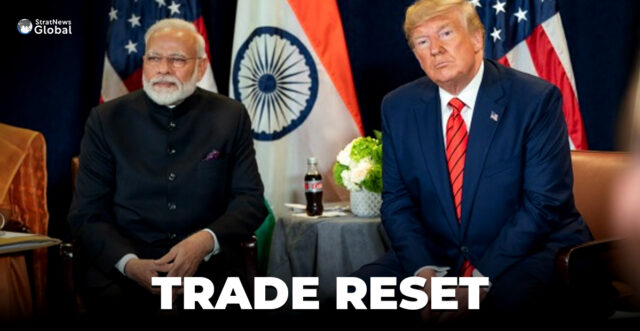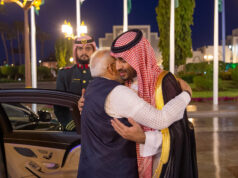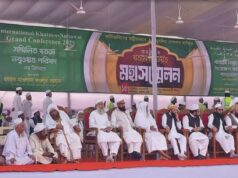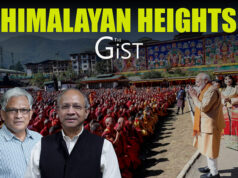India and the United States have resumed negotiations for a comprehensive free trade agreement, setting aside earlier plans for a phased approach, multiple sources told StratNewsGlobal.
Talks were revived after tensions between U.S. President Donald Trump and Prime Minister Narendra Modi. Washington has advised New Delhi to “restart the talks from scratch” to finalise a single pact “in one go,” rather than through tranches.
Before Trump called India a “dead economy” and imposed 50 per cent tariffs, including sanctions over Russian oil purchases, both sides were “just a few inches away” from signing the first tranche of an agreement. Sources said negotiators have now “gone back to the drawing board.”
However, another source noted that India is still weighing the option of an “early harvest” deal, as it did with Australia, followed by a larger agreement. Negotiators from both countries are set for detailed discussions.
In a recent social media post, Trump said, “I am pleased to announce that India and the United States of America are continuing negotiations to address the Trade Barriers between our two nations. I look forward to speaking with my very good friend, Prime Minister Modi, in the upcoming weeks. I feel certain that there will be no difficulty in coming to a successful conclusion for both of our Great Countries!”
Modi responded: “India and the US are close friends and natural partners. I am confident our trade negotiations will pave the way for unblocking the limitless potential of the India-US partnership. Our teams are working to conclude these discussions at the earliest. I am also looking forward to speaking with President Trump. We will work together to secure a brighter, more prosperous future for both our people.”
Commerce and Industry Minister Piyush Goyal added, “In February 2025, Prime Minister Narendra Modi and President Trump together instructed us that the ministers of both sides should make a good agreement by November 2025. The first part of that agreement, the first tranche, should be finalised by November 2025, and since March, discussions have been going on very seriously in a good environment. Progress is being made, and with the progress, both sides are satisfied.”
The renewed trade talks come even as the U.S. pushed G-7 and EU allies to impose more tariffs on India and China for buying Russian oil.
Mark Linscott, Senior Trade Policy Adviser at the US-India Strategic Partnership Forum, said, “My sense is that it’s still very much a work in progress for the two governments to figure out how to climb out of the hole that’s been dug since July. Regardless of what the modality might be, I think there will be months of hard negotiations to nail down all the specifics.”
On agriculture and dairy, sources said Washington has taken a stance similar to Australia’s, aiming to access only the premium segment of products such as cheese.
Biswajit Dhar, international trade expert and former JNU professor, commented, “Lot of kite-flying is going on here. Americans are giving out mixed signals… From day one, an early harvest or a phase-I was not feasible because the Americans have a specific wish-list and that is agriculture.”
He added, “A Phase-1 was never feasible as far as the Americans were concerned. They were more for a EU-model, with one comprehensive trade pact rather than going for tranches. But Trump is in a hurry and so concluding a mega deal in a timely manner within the deadline of 2025-end, can be problematic. He has to show results in 2026 else he will have problems during the mid-term.”
On India’s side, Dhar flagged “lack of transparency” in the talks and said, “There is a strong farm lobby that is now making it difficult for the government to discuss agri-access and dairy products. The recent step taken by the government to reform GST will also prove to be problematic even as it will not help in integrating the Indian economy with the global economy.”





